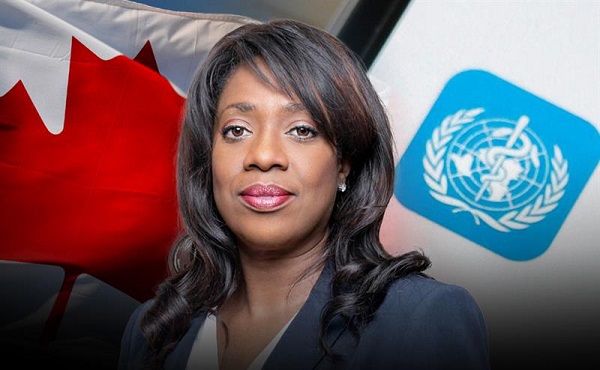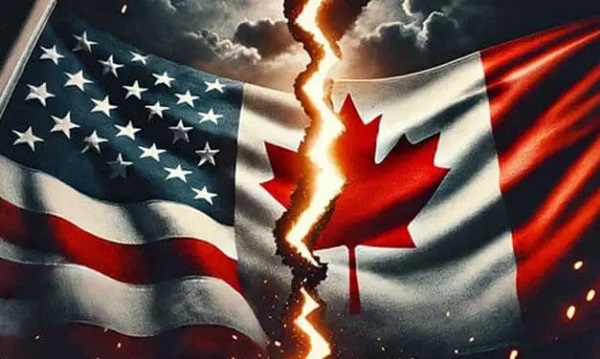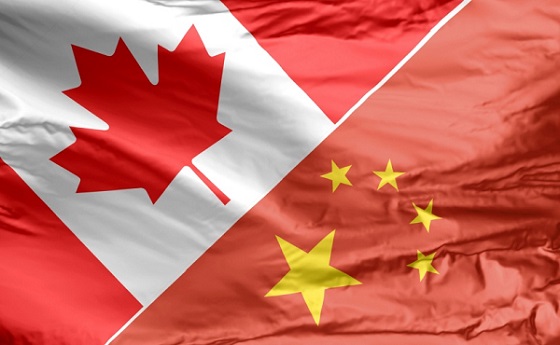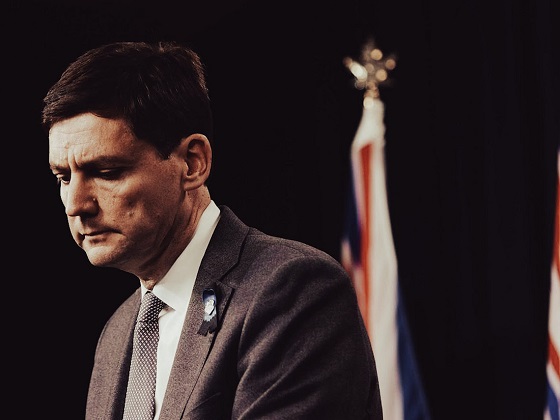From The Center Square
By Casey Harper

By Casey Harper
President Joe Biden committed impeachable offenses in his role in his family’s alleged overseas business dealings, a newly released report from the U.S. House Ways and Committee alleges.
“As described in this report, the Committees have accumulated evidence demonstrating that President Biden has engaged in impeachable conduct,” the report said.
The 291-page report lays out in detail what have at times been murky allegations against the president.
House Oversight Chair Rep. James Comer, R-Ky., helped spearhead the investigation, uncovering and laying out evidence. He and Republicans on the impeachment committee argue that the Biden family, with the help and knowledge of the president, used the Biden family name around the world to rake in nearly $30 million from overseas entities in Ukraine, China, Romania and elsewhere in secretive influence deals.
“In order to obscure the source of these funds, the Biden family and their associates set up shell companies to conceal these payments from scrutiny,” the report said. “The Biden family used proceeds from these business activities to provide hundreds of thousands of dollars to Joe Biden—including thousands of dollars that are directly traceable to China.”
Biden has brushed off questions about his involvement in a scheme being highlighted in the Republicans’ report. The administration has yet to release a formal response in reaction to the report.
A key question in the investigation has been, even if Hunter Biden and others monetized the “Biden brand,” how much did the president really know or participate?
“Witnesses acknowledged that Hunter Biden involved Vice President Biden in many of his business dealings with Russian, Romanian, Chinese, Kazakhstani, and Ukrainian individuals and companies,” the report said. “Then-Vice President Biden met or spoke with nearly every one of the Biden family’s foreign business associates, including those from Ukraine, China, Russia, and Kazakhstan. As a result, the Biden family has received millions of dollars from these foreign entities.”
The president has repeatedly brushed off these allegations, and so far Republicans have not gotten the needed votes to make impeachment a serious threat.
From the report:
“The Biden-Harris Administration has lied to the American people time and again to cover up and obstruct the investigation into tax crimes committed by a Biden family business enterprise that capitalized on political power,” Rep. Jason Smith, R-Mo., who chairs the House Ways and Means Committee, said in a statement. “The American people have been shocked to learn the magnitude of the scheme going back to the President’s time as Vice President, when Biden family members were allowed to use Air Force Two as their own private business jet.
“None of this would have come to light had it not been for the two IRS whistleblowers who were tired of watching their investigation into the President’s son become obstructed, delayed, and denied the ability to move forward as the pursuit of truth demanded,” he added.
The whistleblowers in question are Supervisory Special Agent Gary Shapley and Criminal Investigator Joseph Ziegler, two IRS employees with nearly three decades of combined federal experience.
Those whistleblowers came forward and testified before Congress about Hunter Biden’s alleged tax crimes, saying that this case was unlike any other. One whistleblower testified that the Biden administration interfered in the investigation to protect Hunter and prevent a raid at the president’s Delaware home.
Earlier this year, Hunter, who still faces tax charges Biden was found guilty on federal gun charges.
President Biden has said he will not pardon his son.
Whether Biden falling out of favor with his own party in the presidential election will change that trajectory remains to be seen.
“Americans now know Joe Biden was ‘the brand’ the Bidens sold around the world to enrich the Biden family, and Joe Biden knew of, benefitted from, and participated in his family’s influence peddling schemes,” Comer said in a statement. “The entire Biden influence peddling model relied on Joe Biden’s presence—at meetings, on the phone, or at dinners—to demonstrate his family members’ influence over him, and he repeatedly provided it.”

President Trump and Chinese President Xi Jinping met Thursday in South Korea for their first summit since Trump’s return to the White House, striking a tone of cautious optimism as they sought to cool trade tensions that have strained relations between the world’s two largest economies. Meeting at a South Korean air base, the two leaders exchanged warm greetings and spoke positively about finding common ground after a year of tariff battles. “Great pleasure to see you again,” Xi told Trump as cameras flashed. Trump responded that he expected a “very successful meeting” and predicted a “great understanding” between the two sides.
.@POTUS meets with Chinese President Xi Jinping for the first time since 2019: "It's a great honor… I think we're going to have a fantastic relationship for a long period of time — and it's an honor to have you with us." pic.twitter.com/ueW2gvMcCy
— Rapid Response 47 (@RapidResponse47) October 30, 2025
Xi, speaking through an interpreter, praised Trump’s leadership and said China’s progress “goes hand in hand with your vision to make America great again.” He emphasized that both nations could “help each other succeed and prosper together,” framing the talks as a step toward renewed partnership rather than rivalry. The meeting followed weeks of negotiations between U.S. and Chinese trade officials, who had reached a “basic consensus” on key issues in advance. Xi noted that the talks yielded “encouraging progress” on “major concerns” for both nations and even commended Trump’s role in mediating other global disputes, including conflicts in the Middle East and Southeast Asia.
According to U.S. officials, Trump’s team has signaled readiness to scale back select trade duties if Beijing meets enforcement commitments. The president is expected to ease some of those measures in exchange for China’s one-year suspension of export restrictions on rare-earth and critical minerals — materials vital to American manufacturing. In return, Beijing will reportedly intensify efforts to curb fentanyl smuggling, which U.S. data shows has contributed to roughly one in every 1,000 American deaths over the past five years. China is also preparing to resume large-scale soybean purchases, reversing retaliatory tariffs that hit U.S. farmers earlier this year.
While Trump acknowledged Xi as a “tough negotiator,” he told reporters he had “no doubt” the summit would deliver results. The meeting — framed around mutual economic relief and renewed cooperation — marked a rare bright spot in a relationship defined by tariffs, tech restrictions, and strategic competition. Whether the goodwill in Seoul translates into lasting policy changes remains to be seen, but Thursday’s encounter suggested both leaders are eager to ease tensions and show progress after a bruising trade standoff.

Conservative Member of Parliament (MP) Leslyn Lewis called on Canadians to petition against the World Health Organization’s (WHO) pandemic treaty before it becomes legally binding.
In an October 23 post on X, Lewis encouraged Canadians to demand that politicians debate the WHO Pandemic Agreement before it becomes law after warnings that the treaty could undermine national freedom and lead to global surveillance.
“I have raised red flags about its implications on Canada’s health sovereignty and the federal government’s willingness to enter a legally binding treaty of this weight without any input from Parliament,” she declared.
In May, Canada, under Liberal Prime Minister Mark Carney, adopted the treaty despite warnings that the agreement gives the globalist entity increased power in the event of another “pandemic.”
However, Lewis revealed that since the agreement has yet to be officially signed, Canada is not bound to it and can still make amendments.
“We are now in a critical window of opportunity to ask tough questions and debate the treaty before it is signed by the Minister of Foreign Affairs and binds our nation,” she explained.
Lewis encouraged Canadians to sign a petition calling for a debate of the agreement as well as contacting their local MPs to request a parliamentary review of the treaty.
Lewis revealed that Canadians’ persistent opposition to the treaty has already resulted in some of the more dangerous clauses, including restricting free speech, freedom of movement, and government surveillance, being removed from the final agreement.
“Thanks to the engagement of countless Canadians and concerned citizens around the world, the most extreme provisions in the WHO Pandemic Treaty were removed — these measures would have undermined national healthcare sovereignty and given international bureaucrats sweeping powers,” Lewis declared.
“The removal of provisions on vaccine mandates, misinformation and disinformation, censorship requirements, travel restrictions, global surveillance, and mandatory health measures happened because people paid attention and spoke up,” she continued.
Among the most criticized parts of the agreement is the affirmation that “the World Health Organization is the directing and coordinating authority on international health work, including on pandemic prevention, preparedness and response.”
While the agreement claims to uphold “the principle of the sovereignty of States in addressing public health matters,” it also calls for a globally unified response in the event of a pandemic, stating plainly that “(t)he Parties shall promote a One Health approach for pandemic prevention, preparedness and response.”


Strongest hurricane in 174 years makes landfall in Jamaica


Canada’s combative trade tactics are backfiring


Biden’s Autopen Orders declared “null and void”


Study promotes liver transplants from Canadian euthanasia victims


Canada has given $109 million to Communist China for ‘sustainable development’ since 2015


Musk launches Grokipedia to break Wikipedia’s information monopoly


British Columbians protest Trump while Eby brings their province to its knees


Bill Gates walks away from the climate cult